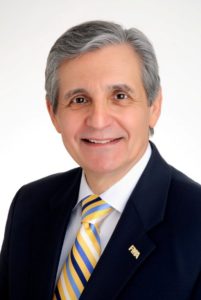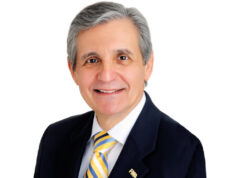
The patient was thin, pale and clearly frightened, although he tried not to show it. With poor English skills, he patiently sat on the examining table trying to understand what I was saying. His wife and two small children sat on chairs. His wife’s English was much better, and she appeared to appreciate what her husband was facing.
Until a month ago, he was in perfect health. He had immigrated from Vietnam, working as a nail tech to support his young family. Now on dialysis three times per week, their lives have drastically changed. His two boys behaved as young boys are supposed to: their eyes taking in unfamiliar objects; squirming in their seats. Intermittently, their mother admonished them with about the same effect her comments would have on puppies.
Being far older, my mind raced back to painful memories of the Vietnam War. Unpleasant images of the 1960s and 70s coursed through my brain.
I felt sympathy for this gentleman and his family, who had emigrated to this country seeking a better life, only to encounter an IgA nephropathy that put him on dialysis. Of course, his kidney biopsy resulted in a hematoma and a thoracentesis resulted in a pneumothorax. Neither proved serious but both added to his emotional burden. His dialysis catheter failed intermittently, and he was sent to me for permanent access. Unfortunately, that procedure and others are suspended because of the COVID-19 pandemic.
Like many institutions, hospitals were ill-prepared to deal with the viral threat. Governments and healthcare systems alike reacted with stuttering and often contradictory steps. Trying to both minimize the deadly effect of the illness while preserving economic vitality have essentially been shown to be mutually exclusive.
It has been some time since societies have experienced a curtailment in personal freedoms or been required to make personal sacrifices. By comparison, the Greatest Generation—whose members lived through both the Great Depression and World War II—would likely have adapted with only minor annoyance to the sort of adaptations being asked of people today.
Back in their day, conservation of tin cans, gasoline, food rationing and blackout curtains were a way of life. Modern society is significantly less disciplined, with individuals recently chafing under newly imposed restraints to which they are is unaccustomed.
Lost income
Although the restraints are largely self-imposed, social conduct has predictably led to excess. While there are no food or water shortages, gasoline is abundant (and cheaper than it has been in 10 years), supermarket shelves are cleared of chicken, hamburger, frozen foods, cleansers and orange juice.
It begs the question: What herd mentality resulted in the hoarding of toilet paper? The real sacrifices will been made by employees in the hospitality industry and gig workers who will be out of work for several months, unable to re-coup the lost income.
The federal government has been schizophrenic at organizing a thoughtful response. While the Centers for Disease Control and Prevention (CDC) had contingency plans for a national response to a flu pandemic, its recommendations were initially ignored. Without a coherent centralized policy, states implemented their own plans.
That fragmentation and lack of consistency has left people with uncertainty and fear. That fear will likely be more destructive than the actual disease. As states begin to re-open, it will be a while before people feel safe flying and intermingling. The emotional scars will be deep.
Hospitals and hospital systems, meanwhile, were left to devise their own responses. Drawing as best they could from the CDC, the American Hospital Association and state organizations, hospitals formed committees to implement strategies for patient protection.
Visitors were excluded from seeing loved ones, temperatures were checked upon entry, negative pressure rooms were hastily devised, and all but urgent-emergent operations were prohibited.
In some hospital systems, doctors were prevented from wearing masks; in others, they were permitted. Some hospitals were transparent about their COVID-19 encounters, while others were not.
Tents were erected outside emergency departments to screen patients. While seemingly a wise move, this often resulted in driving patients away from hospitals. Emergency departments are empty. Specialized hybrid operating rooms were reserved for COVID-19 patients. Those in need of critical high-tech equipment were relegated to less sophisticated rooms. In any battle, there is going to be misjudgment.
PPE shortages
Perhaps more baffling is why hospitals in the New York area experienced personal protective equipment (PPE) deficits: The specter of caregivers, doctors and nurses alike being sent to treat infected patients with minimal protection almost conjures images somewhat reminiscent of Russian soldiers dispatched to the battle of Stalingrad without guns or bullets.
Whether or not this story is apocryphal, few soldiers survived. CDC guidelines recommend full garb. Lacking this, face masks and face shields could be re-used until their opacity became so obscured, they were rendered useless. The CDC recommends that if masks are not available to caregivers, they should tie a scarf around their face and nose: this in the United States, the richest country on the face of the planet, with the highest standard of living.
With ventilators in short supply, doctors face the morally repugnant decision to ration care. As evidenced in the north of Italy, physicians and nurses suffered moral injury watching potentially salvageable 60- and 70-year-old patients die untreated.
To the good, the American Medical Association, American Nurses Association and the American Hospital Association co-authored a letter to the president on March 21, asking that the Defense Production Act be implemented. (It is worth noting that this likely is the first and only time those three organizations have ever worked collaboratively!)
The act, of course, requires designated American manufacturers to immediately respond to critical shortages. But beyond PPE, the pharmaceutical industry has the capacity to make the reagents needed to perform testing. CDC test protocol uses three primer and probe sets to detect three regions in the gene for the COVID-19 nucleocapsid. If doctors were able to identify carriers and patients more accurately, control and spread of the disease would be much more precise. Antibody tests are only 90% accurate and can’t reliably fill the gap.
Given the lack of PPE and ventilators, one wonders why the Defense Protection Act was not implemented sooner? Sending a nurse in to treat a patient with active COVID-19 with a scarf tied around his or her face as their only protection is like sending a firefighter into a burning building dressed in silk pajamas. It speaks to an ineptness of leadership.
Societal collapse
A book by Portuguese Nobel Prize-winning author Jose Saramago entitled “Blindness” tells the story of a city and country beset by an unknown disease that inflicts blindness. Society collapses as more and more people are smitten. The story is told from the perspective of an ophthalmologist and his wife who endure and witness the total collapse of civilization. The government’s inept and unsuccessful attempt to sequester the disease leads to loss of governmental control.
Without eyesight and the accoutrements of modern life, civil order degenerates as humans fight for their own survival. Very few maintain their dignity. Most individuals revert to primitive behavior. Ultimately, the disease disappears but society is left with deep scars that are not easily or quickly resolved. Despite experiencing this depravity, the ophthalmologist and his wife manage to retain their humanity.
While the world is currently traumatized by this aggressive piece of mutant ribonucleic acid (RNA), it is one of many diseases that physicians treat. Doubtless a year from now, and hopefully sooner, we will have vaccines and treatment.
There will be doctoral theses and books written examining the cause and response to this endemic. The president and governors will be judged by their actions. Because of public fear, our leaders are obliged to demonstrate that they have done something meaningful to protect the public.
Some interventions may be useful; others are for show. In 2001, after 9-11, soldiers and SWAT officers strolled around Fort Lauderdale airport with assault rifles, looking protective. Alas. The weapons were empty. No bullets. But their presence served a purpose: to reassure the public.
A case in point: A SWAT officer friend of mine who was stationed at Port Everglades was charged with stopping cars as they drove in to go on cruises. One car, which was filled with four elderly people, drove through the gate without stopping. They obviously weren’t terrorists. But the SWAT team captain shouted to his sergeant: “Why didn’t you stop them?” To which my friend responded: “What do you want me to do, shoot them?”
His point was well made. Some responses are appropriate, and some are not.
Florida Gov. Ron DeSantis issued an edict prohibiting all elective surgery. Everything but life- and limb-threatening surgeries were prohibited. This shut down all dentists, free-standing outpatient surgi-centers, and the majority of surgical and invasive work in hospitals. Someone coming in with a non-STEMI (ST-elevation myocardial infarction) would be treated medically. Cancer surgery was postponed. Bypasses and endovascular procedures for all but limb salvage were canceled. Dialysis shunts were postponed.
These proscriptions were enacted to conserve resources, including blood transfusions and ventilators. Restrictions would seem to apply in New York with its deluge of cases. In places where the volume of COVID-19 cases has not challenged resources, is the delay in treatment sound public policy? Or are we going to pay for this delay by operating on patients at a later stage of their disease?
The restrictions are slowly being eased in less affected parts of the country. Untapped resources are available but underutilized. Restrictions remain in effect, allowing only limited access to operating and hybrid rooms.
COVID-19 has a 7% mortality rate worldwide—less in the United States. In the U.S., we have more than 1 million cases with 70,000 deaths. To put this into perspective, suicides accounted for 48,344 lives lost in 2018 (over 50% by firearms); 67,367 from overdose; 38,800 vehicular deaths; 15,292 to firearms (excluding suicides); and 34,200 deaths occurred last year from influenza.
Which brings us back to the 39-year-old dialysis patient with the problematic tunneled catheter. Is delaying his fistula until the catheter stops working completely—or becomes infected—warranted? We are talking about an outpatient operation with minimal blood loss and little chance of hospitalization. The wife says that she trusts me to do the right thing. I said that I’ll try.
But he is only one of a number of sick patients with illnesses that don’t involve respiratory distress who require care. Does our focus on this disease oblige us to abandon them?
Arthur E. Palamara, MD, is a vascular surgeon in Hollywood, Florida, and is associated with Memorial Regional Hospital, part of Memorial Healthcare System in the same city.











